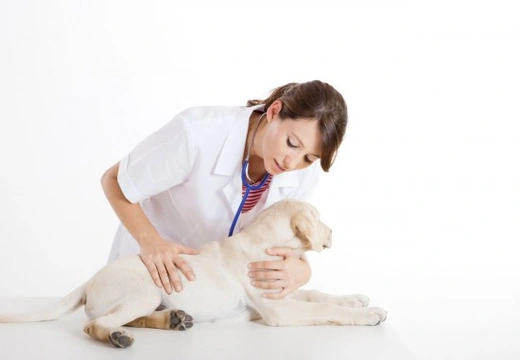
Hot Spots on Dogs
Spring is finally here! And you have just noticed your dog is licking constantly at a small patch on his coat! The hair is disappearing and your dog’s skin is becoming red, raw and irritated. It may be that your dog is suffering from hot spots – a common occurrence during spring and summer.
What are hot spots?
Also known as Acute Moist Dermatitis, Hot spots are small red and moist rapidly appearing patches on the dog’s body. If the skin of your dog is irritated by any of a number of factors such as allergy, fleas, poor hygiene or even boredom, he will lick and chew at the site that bothers him. The hair in the area is pulled out by the dog chewing and the skin becomes damp with the saliva from his mouth, the cycle of irritation occurs where the more the dog chews the skin the more irritated it will become
Signs of hot spots
It is difficult to miss hot spots on your dog; the first sign will undoubtedly be that your dog becomes highly irritated by small patches on his body. He will nag and chew at the area making it worse. It is important to treat the hot spots as soon as you suspect your dog has them as when skin is open , bacteria can enter particularly from the mouth due to the constant chewing. If this occurs the lesions may become badly infected and require extensive treatment. Hot spots cause such extreme irritation and agitation in your dog that even the friendliest, most even tempered dog can become snappy or nip if you try to look at the hot spot or stop him chewing. If you think your dog has hot spots you may notice some of the following signs:
- Hairless patches on the dogs body between 2cm—8cm
- Found predominately on the head, base of tail and underside.
- Your dog will lick and gnaw at the hot spot irritating it further.
- It is likely there may be multiple lesions throughout the dog’s fur.
- In breeds with long hairy ears such as Spaniels the patches are often under the ears
- The hairless patch looks red, moist and raw
- The hot spot may weep pus and will have an off-putting odour
- Your dog may display signs that the hot spots are causing distress
To look at the area in which you suspect there is a hot spot it is a good idea to take extra care with your dog. Reassure him and speak to him while you run your hand gently across the body towards the area where the lesion is located, if you are calm and quiet he will be less likely to react to you approaching the area.
Causes of hot spots
Hot Spots are caused by a skin irritation which in turn causes the dog to lick, scratch and chew at the area. They grow rapidly as the hair is pulled from the follicles and the skin is opened to allow bacteria to enter and cause infection. Although hot spots can affect any breed of dog at any time there are some factors that make hot spots more likely to occur. Some veterinary specialists suggest that dogs with hairy floppy ears are prone to hot spots around the ears, such as Newfoundland’s, beagles and spaniels.
Other contributing factors for hot spots can be as follows:
- Long haired dogs
- Dogs who spend time in long grasses
- Dogs with behavioural issues (e.g. separation anxiety)
- GSD, Golden Retriever and boxers as a breed predisposition
- If hot spots occur near base of tail then there could be anal gland issues
- Poor hygiene and grooming
Diagnosing hot spots
The veterinary surgeon will normally be able to confirm diagnosis of Acute Moist Dermatitis on examination and from taking a history from the owner. It is important for the vet to determine whether there is an underlying cause such as fleas, an allergy or if the hot spots are stress related. This will allow the correct treatment regime to be recommended.
Treatment of hot spots
The first step of the treatment is to clip the hair that surrounds the lesions exposing it to the air and allowing healing to start. This may need to take place under sedation or anaesthetic depending on how the dog reacts to the clippers. The clipped area will then require a thorough cleanse with chlorhexidine ( Hibiscrub) or a similar solution and the cleaned lesions will be allowed to dry. The veterinary surgeon will normally prescribe a topical steroid and antibiotic cream to apply to the area in addition to oral antibiotics. It is important that the course of treatment is completed even if the symptoms seem to have improved. Some dogs will continue to chew at the area, if your dog does this he will need to have a special collar fitted (Known as an Elizabethan or Buster Collar) to stop him from reaching his body.
Preventing hot spots
It is not possible to completely prevent hot spots occurring but there are a few simple things that owners can do to try to decrease the likelihood of the dog becoming irritated. Daily and thorough grooming is essential for the health of the coat and the skin. When a long haired dog is moulting grooming can help remove the undercoats which can be a trigger for hot spots. This will also allow you to identify if the dog ever comes into contact with any parasites such as fleas or ticks.
Following a strict flea and worm programme is vital for the general wellbeing of your pet and your family. It will also ensure there are no fleas, eggs or mites on the body or in the fur which may irritate the dog. Speak to your veterinary practice about ensuring you are using the correct regime for you and your dog.



